Micro Focus Desktop Containers 21.1 Readme
The information in this Readme pertains to Micro Focus Desktop Containers, which lets you convert applications that run on Microsoft Windows into self-contained virtual applications.
The following information is included in this Readme:
1.0 What’s New in Version 21.1
Micro Focus Desktop Containers 21.1 includes the following updates:
1.1 Micro Focus Desktop Containers Server
This release includes the following new features:
-
Support for Moodle and Blackboard Learning Management Systems (LMS).
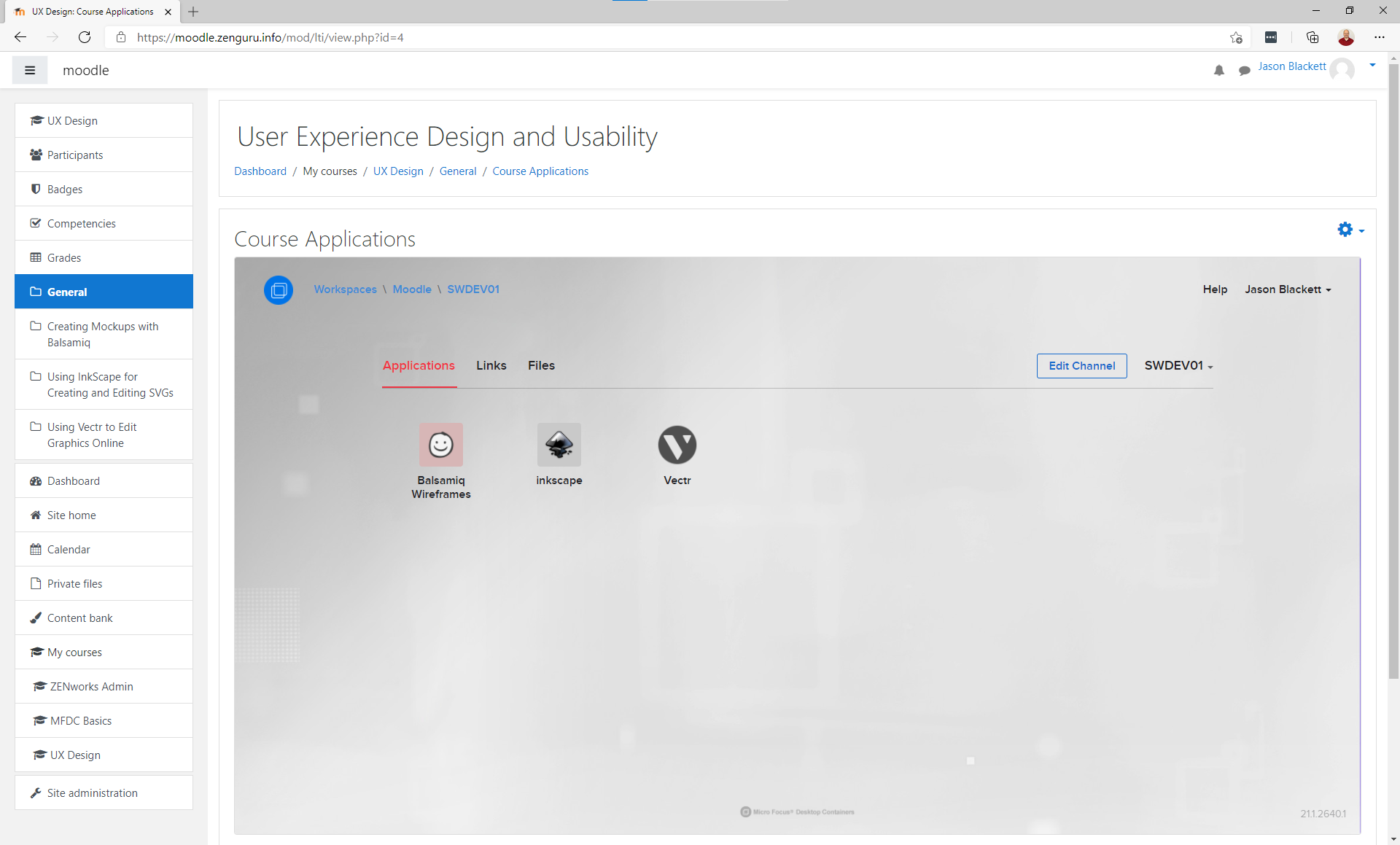
-
Learning Tools Interoperability (LTI) User Identity settings now supports custom LMS user fields to login and create Turbo Server internal users.
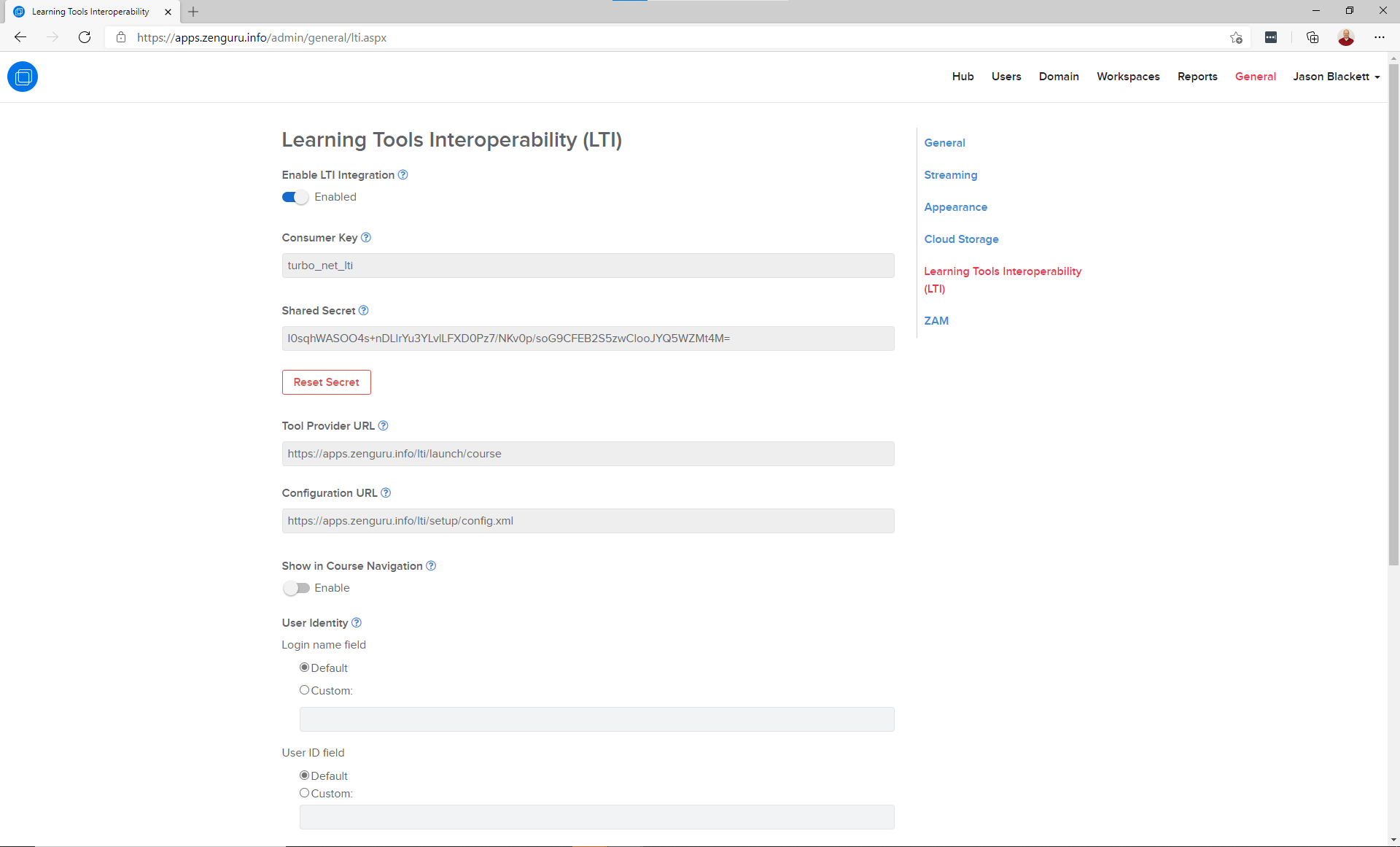
-
New LTI integration Courses settings map LMS courses to individual Turbo workspace channels, allowing multiple courses to share workspace content and configurations.

-
New Temporary User Profile Lifespan setting allows administrators to specify the length of time that a temporary profile will be cached on the application server. The default value is 7 days.
-
Workspace items can now be grouped into Channels with customizable user and group permissions. Channels are ideal for assigning entitlements to specific classes, teams or departments. Channels are listed on the Portal Dashboard to permitted users.
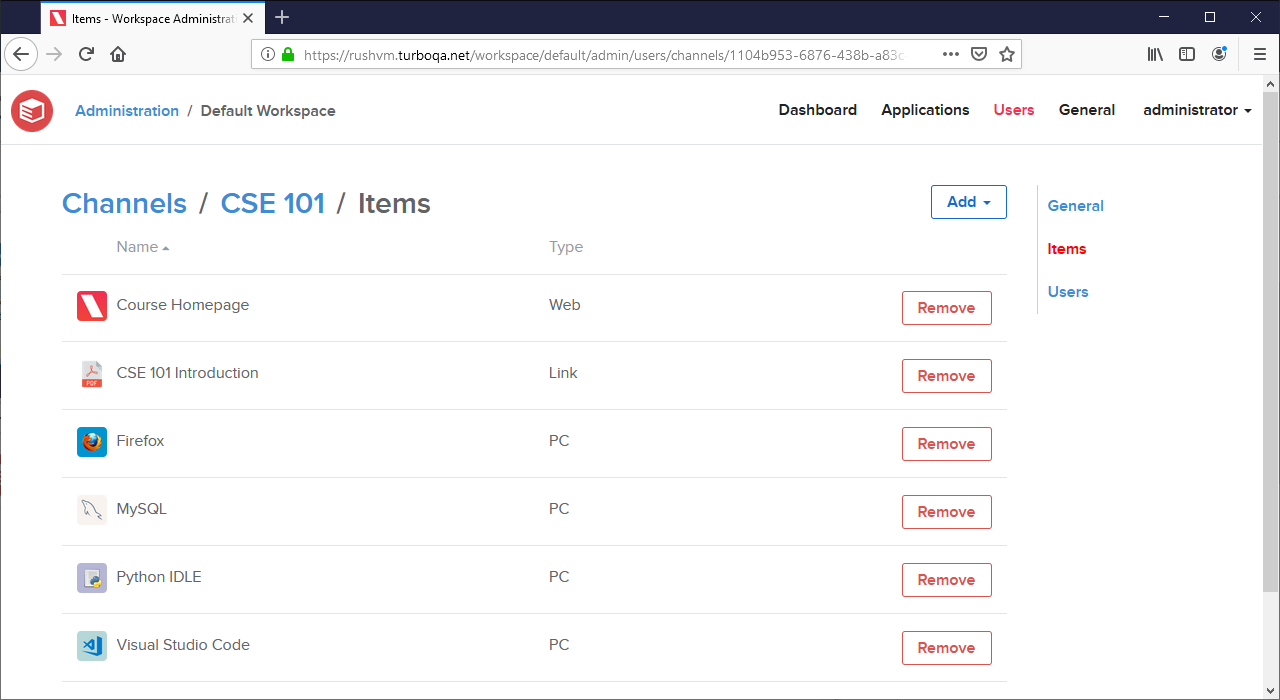
-
New Web Application and Link item types can now be added to workspaces, allowing users to open configurable URLs in a virtual browser sessions or in their native browser.

-
New Learning Tools Interoperability (LTI) integration allows students and instructors to access course applications directly within Canvas and other LTI-compliant Learning Management Systems (LMS).

-
HTML5 client and SSO logon errors now include additional troubleshooting details to simplify error resolution.
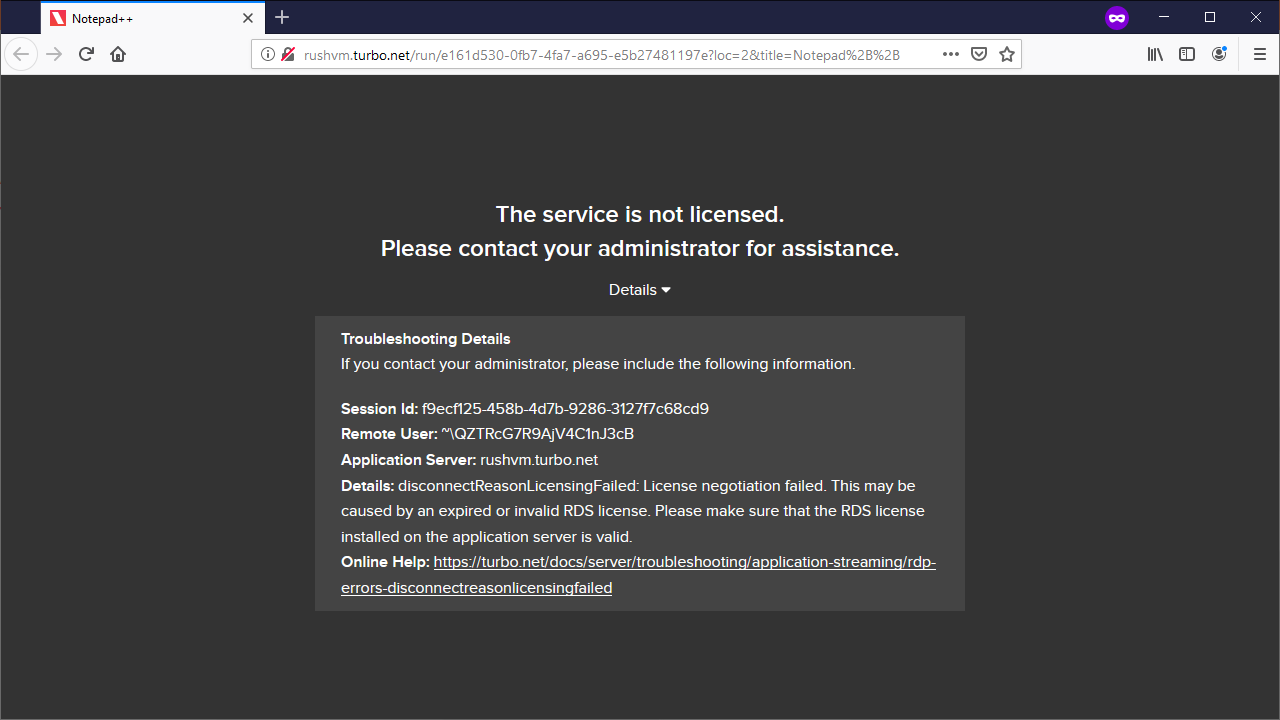
-
Session time limits can now be configured from the administration site Streaming page.

-
New Show Launch Page setting allows administrators to configure applications to launch directly from the dashboard or in a new browser tab.
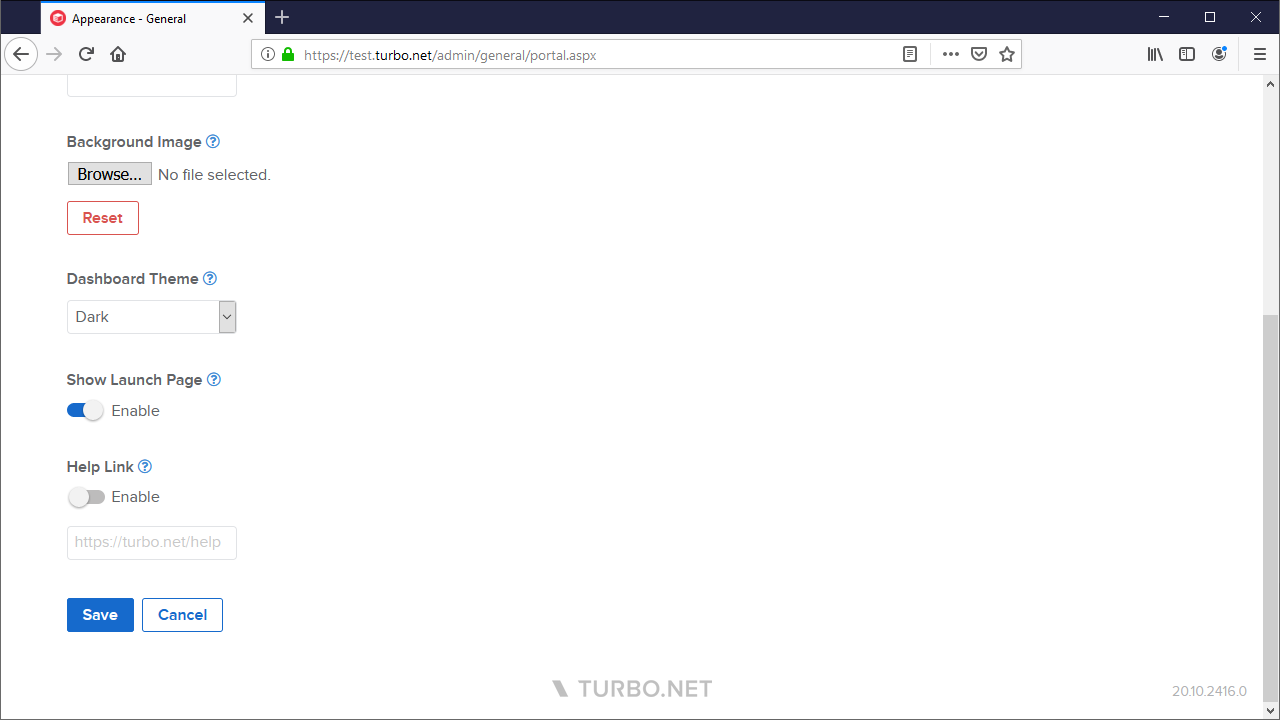
-
Other Improvements include:
-
Initial page load times on the administration site have been significantly decreased.
-
Administration site forms now warn about unsaved changes before navigating away from the page.
-
New Service Health Check monitors and restarts unresponsive services.
-
New Content Security Policy header has been added to the Portal site.
-
The LTI Secret may now be reset from the administration site.
-
Group policy errors now generate administration alerts.
-
The Directory Service settings page has been split into multiple tabs with improved form control behavior.
-
The HTML5 client now reports more descriptive errors on remote application errors, missing application versions, and application licensing limits.
-
Updated various strings and administration site styles.
-
Google LDAP authentication is now supported.
-
New Enable Drive Redirection setting configures the visibility of mapped drives when streaming remote applications.
-
New Ticket Expiration Time setting configures the expiration time for user logins.
-
New Ticket Expiration Time setting configures the expiration time for user logins.
-
OCSP Stapling has been enabled to improve SSL certificate verification.
-
SSL certificate fields now allow .PEM file extensions.
-
New Application Type selector has been added to the Repository Settings page.
-
The workspace permissions form now supports user and group search.
-
Streaming settings now update the application server's local group policies and no longer require a server restart.
-
Broker resource allocation strategy allows falling back to unresponsive but potentially functional application servers.
-
Portal authentication recovers faster when the API service restarts or has connectivity issues.
-
The Last Modified Date is now preserved in Server log archives.
-
Improved service user database permission checks during server installation
-
RDS Licensing Tools are now included when installing the Application Server.
-
The workspace administration Share Application dialog now includes a Name field.
-
HTML5 client launches from the workspace administration Test dropdown now enable diagnostic client logging by default.
-
Workspace application command line now reports errors on invalid isolation modes.
-
Improved install path validation during installation.
-
Improved Import Repository input validation from the administration site.
-
-
This update includes fixes for the following issues:
-
Share links with user authentication did not redirect correctly after login.
-
The Workspace Administration Test button did not appropriately display a Permission Denied error message.
-
The application server settings page was incorrectly causing the Hub server to restart.
-
Hub database migration could fail if the source path contained a locked file.
-
Deleting a repository that was in use by a workspace item could cause broken icons and repository references.
-
Workspace channels, channel items, and channel permissions were not being replicated correctly during Workspace federation.
-
Directory Services could fail to sync if they were federated from a different server.
-
Application server availability detection was incorrect after deleting an application server with pre-cached applications.
-
The Portal server administration link was broken on servers with multiple domain URLs.
-
Frame security error could cause cloud storage service logins to fail on servers with multiple domain URLs.
-
Web Applications were being installed with the repository name instead of the application display name.
-
Server administration site failed to load when accessed from an iframe.
-
User Group management could fail when managing large user groups, and in rare cases incorrectly remove users.
-
Users were not displayed correctly on the administration site if they were missing a display name.
-
Channels could be created with conflicting web paths.
-
Changing a Workspace web path would navigate to the incorrect URL.
-
HTML5 client text input lost when running Powershell and Xencenter.
-
The Test button on the administration site uses cached application settings under certain circumstances.
-
Fixed Single Sign-On (SSO) login errors caused by an invalid login state cookie.
-
The HTML5 client login form no longer appears when using Anonymous authentication under certain error conditions.
-
HTML5 client error text cannot be copied to the clipboard.
-
Incorrect scroll behavior on the administration site Add Members dialog.
-
Database connection strings are reset when clicking Back during installation.
-
Sorting order of workspace administration links in Portal account dropdown.
-
SSL gateway error when using multiple domain URLs in a multi-server farm.
-
Application launches may fail Intermittently after a server restart.
-
1.2 Micro Focus Desktop Containers Studio
This release includes the following updates:
-
Turbo Studio is now free to use for personal and non-commercial use. A Turbo.net login is required.
-
The Turbo VM is updated to version 20.12.1555.
-
Studio can now Import images directly from Turbo Server Hub.
-
Setup Capture performance improved and notifies if files are locked that prevents capture.
-
Compatibility fixes for latest versions of Google Chrome
-
Support for latest versions of 32-bit Chrome.
-
Support for translating 16-bit window handles for use on 64-bit versions of Windows.
This release includes fixes for the following issues:
-
Some registry keys can be missed during Setup Capture.
-
Starting a container instance while another is running can fail after some time.
-
Some build errors fail to be displayed.
-
Adobe Media Encoder fails to start.
-
Expiration date not reflected in the Licensing panel correctly.
-
Some virtual machine settings do not have tooltips.
-
Turbo.net login for import is broken.
-
Wildcard character ("*") does not match any addresses for IP restrictions.
-
Error occurs when attempting to search the file system panel.
-
Error occurs when building a Portable Executable with a non-standard version format.
-
Snapshot doesn't properly handle the case when a registry value was stored with an invalid null termination.
-
The Login button on the Publish to Server dialog fails.
-
GetThreadContext Win32 API saves an incorrect register state.
-
A Recycle Bin is corrupted error may appear intermittently when running remote applications.
2.0 Product Documentation
The following sources provide information about Micro Focus Desktop Containers:
3.0 Understanding the Upgrade Requirements
-
All application configuration documents and application certificates created with ZENworks Application Virtualization 8.x, 9.x, 10.x, and 11.x must be re-created in order for application streams to work with the Micro Focus Desktop Containers standalone components.
To generate a new certificate and regenerate the configuration files:
-
In the Advanced section of the Micro Focus Desktop Containers Studio, click the App Config button to regenerate the application stream configuration files.
-
To generate a new site license certificate, click Advanced.
-
In the Application Certificates dialog box, click Request Certificate.
-
Specify the following information in the fields:
-
Organization: The organization name.
-
Unit: The user or unit name.
-
Allowed Portal Hosts: The allowed host names of the servers from which the application will stream.
-
-
Click Request to request the site license certificate, then save the certificate to a desired location.
-
Click the App Config button to regenerate the application stream configuration files again.
-
-
ZENworks Application Virtualization versions 8.x, 9.x, 10.x, 11.x and Micro Focus Desktop Containers 12.x always run side by side on a device. The Micro Focus Desktop Containers 12.x installation does not change the ZENworks Application Virtualization 8.x, 9.x or 10.x and 11.x installations in any way. However, if you open a virtual application and save it in version 12.x, it should not be subsequently used with version 8.x, 9.x 10.x or 11.x.
4.0 Legal Notices
For information about legal notices, trademarks, disclaimers, warranties, export and other use restrictions, U.S. Government rights, patent policy, and FIPS compliance, see https://www.novell.com/company/legal/.Copyright © 2021 Micro Focus Software Inc. All Rights Reserved.
Online Documentation: To access the latest online documentation for this and other Novell products, see the Novell Documentation Web page.